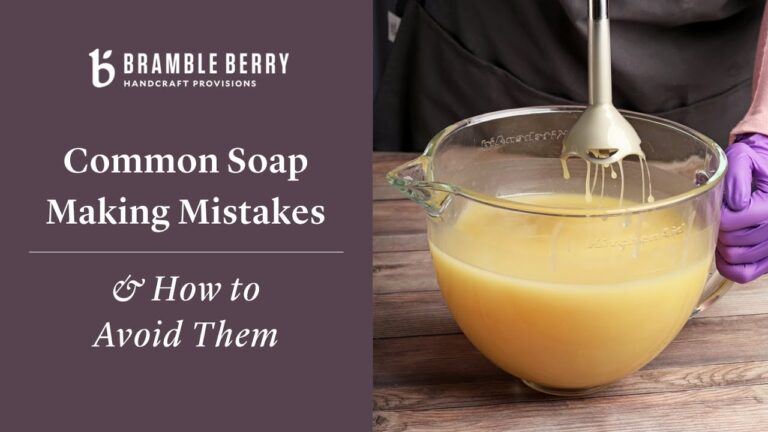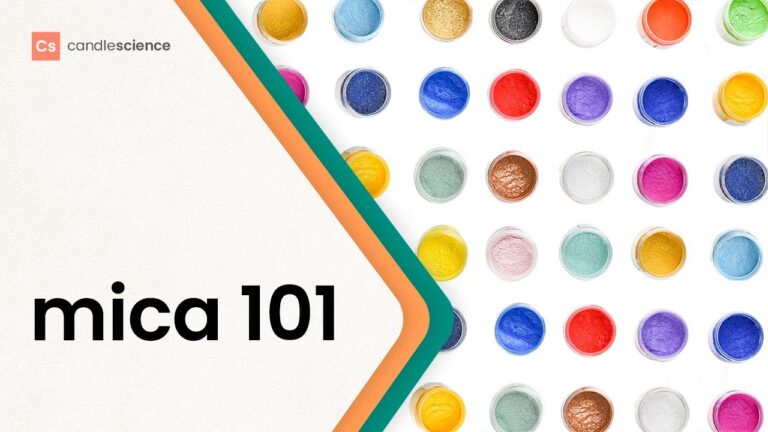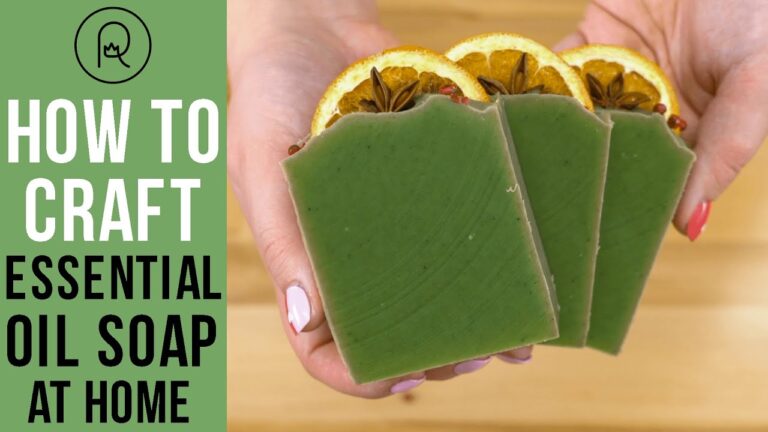Are you struggling with hot process soap making? Don’t worry, we’ve got you covered. In this article, we’ll dive into common issues and troubleshooting tips to help you perfect your hot process soap technique. Whether you’re dealing with lye separation, overheating, or texture problems, we’ll provide practical solutions to get your hot process soap back on track. Say goodbye to frustration and hello to successful soap making!
- Overheating can cause the soap batter to scorch and become discolored.
- Inadequate mixing can result in uneven distribution of ingredients, leading to soap that doesn’t set properly.
- Using inaccurate measurements of lye or oils can throw off the saponification process and result in a lye-heavy soap.
- Not allowing the soap to cool enough before adding fragrances or colorants can cause them to dissipate or morph in the heat.
- Ignoring proper curing times can result in a soft and mushy soap that doesn’t lather well.
What caused my hot process soap to separate?
There are a few reasons why your hot process soap may have separated. One common cause is when fragrance oils do not properly mix with the soap during the blending process. If this happens, you can attempt to blend it again to see if the issue resolves, but in some cases, the soap may be beyond saving.
Another factor that can lead to separation is an excess of lye in the soap mixture. To determine if this is the case, you can use a PH strip to test the acidity of the soap. If the PH level is too high, it may be causing the soap to separate.
In conclusion, separation in hot process soap can be attributed to issues with fragrance oil incorporation or an imbalance of lye in the mixture. By addressing these factors, you may be able to prevent future instances of separation and create a more stable and cohesive soap product.
What is causing my hot process soap to not harden?
If your hot process soap is not hardening, it could be due to using too much water or not enough sodium hydroxide in your recipe. To troubleshoot this issue, consider running your recipe through a lye calculator to ensure the correct amounts are being used. By adjusting the water and lye proportions, you should be able to achieve a harder soap consistency.
What are the consequences of overcooking hot process soap?
Overcooking hot process soap can result in a dry, crumbly texture that is unpleasant to use. Just like overcooked chicken, overcooked soap is not ideal. It is important to monitor the cooking process closely and not leave the soap unattended until it is fully cooked and ready to cool down.
Avoid the disappointment of overcooked soap by keeping a close eye on the cooking time and not letting it finish cooking in the mold. Remember, patience is key when making hot process soap to ensure a smooth and creamy finished product. Don’t let your soap suffer the same fate as overcooked chicken – keep a watchful eye on the process from start to finish.
Common Hot Process Soap Problems and Solutions
Are you tired of dealing with common hot process soap problems? From overheating to uneven texture, these issues can be frustrating and time-consuming to fix. However, with the right solutions, you can quickly overcome these obstacles and create high-quality hot process soap every time.
One common problem with hot process soap is overheating, which can lead to a rough and crumbly texture. To prevent this, try using a lower heat setting and stirring the soap more frequently. Another issue is color inconsistency, but this can be resolved by properly mixing your colorants and ensuring they are fully incorporated into the soap. By implementing these solutions, you can overcome common hot process soap problems and achieve consistent, professional results.
Mastering Hot Process Soap Making: Troubleshooting Techniques
Are you ready to take your hot process soap making skills to the next level? Look no further than our comprehensive guide on mastering hot process soap making. From troubleshooting common issues to learning advanced techniques, this guide has everything you need to become a hot process soap making expert.
Discover the secrets to troubleshooting techniques that will help you overcome any obstacles in your hot process soap making journey. With step-by-step instructions and expert tips, you’ll be able to tackle any issue that comes your way. Whether you’re a beginner looking to improve your skills or an experienced soap maker wanting to refine your craft, this guide is the ultimate resource for mastering hot process soap making.
Expert Advice for Perfecting Hot Process Soap
Are you looking to perfect your hot process soap making technique? Look no further for expert advice on achieving the perfect batch every time. With tips on ingredient selection, temperature control, and proper mixing techniques, you’ll be on your way to creating luxurious, handmade soaps that are sure to impress. Whether you’re a seasoned soap maker or just starting out, these tips will help you elevate your craft and create stunning hot process soaps that are both beautiful and effective. So, roll up your sleeves, gather your supplies, and get ready to create soap that will leave you feeling clean, refreshed, and proud of your handiwork.
Quick Fixes for Hot Process Soap Mishaps
Are you tired of dealing with hot process soap mishaps? Look no further! Our quick fixes will help you tackle any issue that may arise during the soap making process. Whether it’s a lye-heavy batch, overheated soap, or uneven coloring, we have the solutions to get your soap back on track in no time.
First, if you find yourself with a lye-heavy batch, don’t panic. Simply dilute the soap with water or milk to help neutralize the excess lye. Be sure to wear protective gear and handle the soap with care to avoid any skin irritation. Once the soap has been diluted, allow it to cure for a few extra days to ensure that the lye has completely reacted with the oils.
Next, if your soap has overheated during the cooking process, try placing it in the refrigerator or freezer to help it cool down quickly. This will prevent the soap from becoming too hard or crumbly. Once the soap has cooled, you can reheat it gently on the stove to bring it back to a workable consistency. Remember to stir the soap frequently to ensure even heating throughout. With these quick fixes, you’ll be able to salvage your soap and continue creating beautiful handmade products.
In order to achieve successful results when making hot process soap, it is important to pay attention to the temperature, consistency, and timing of the process. By addressing common issues such as overheating, seizing, or incorrect proportions of ingredients, soap makers can ensure a smooth and successful outcome. With practice and patience, troubleshooting these issues will become second nature, leading to beautifully crafted bars of soap every time. So keep experimenting, learning from mistakes, and refining your technique to create the perfect batch of hot process soap.



